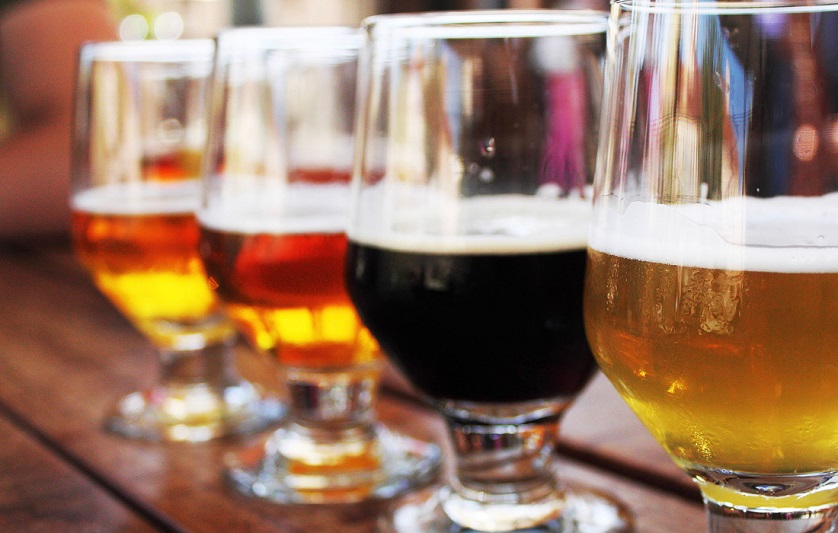Contents
What is Craft Beer?
Craft beer is commonly perceived as a substitute for mass-market counterparts (aka “macro beer”) such as Budweiser, Tiger, and Heineken. Even though they are practically identical—beverages made by fermenting malted grain, water, and hops— defining “craft” is trickier than just “beer made in small batches with special ingredients”.
Is craft beer higher quality? If we consider the choice of quality ingredients, and the lack of use of extra water as the filler that negatively impacts consistency and taste, the answer is yes. Although “craft” is typically associated with small-batch breweries, some establishments that began as such now produce millions of barrels.
While usually produced using conventional techniques, there are those that are pushing the limits of character and aroma through technology and experimentation. You can easily find both at Sydney beer stores that have plenty to offer from the country and overseas.
Recognise the Varieties of Craft Beer

Breweries have become an integral part of the lives of Australians, from craft beers being the chosen drinks for social gatherings and sporting events alike. Craft beer hags specifically gained significant popularity among Australians over time, owing to the nation’s proclivity for distinctive portions that exhibit a wide range of styles and flavours.
To avoid delving into technical details, the following describes the characteristics of the most common types of beer in the country. If you are already familiar with the vocabulary and food pairing recommendations, you may proceed to the subsequent section for additional pointers on selecting and appreciating this popular beverage next time you shop for Sydney craft beer trying to experience something new.
1. Lager/Pilsner
Although not all beer is lager, the majority of macro beers (e.g., Bud, Carlsberg, Heineken, and Tiger) are lager in character. A Czech variation of this type, Pilsner, is characterised by the addition of hops. In general, they are crisp and invigorating, with floral, fragrant hops contributing to a robust bitterness. Rauchbier (smoked beer), Bock/Doppelbock, and Oktoberfest beers are additional varieties of lager; the malts utilised impart distinct characteristics to each variety, such as caramel, bread, or smoke.
Food pairing suggestions
Fish and chips, pasta aglio e olio, tempura, fried rice, and Hokkien mee are all suitable accompaniments for lighter lagers. On the other hand, roast meats and sausages of both Western and Asian origin pair well with darker, sweeter lagers. Appropriate for those who believe that “beer should taste like beer” and desire a conventional flavour and aroma.
2. Pale Ale/India Pale Ale (IPA)
Pale ales widely popular at any Sydney craft beer shop, including their hoppier IPA counterparts which are highly sought-after and readily accessible varieties. “Pale” simply denotes the application of pale malt. These tend to have a fruitier character even before hops are added to impart bitterness, aroma, and flavour.
Do not be astonished if a pale ale or IPA that is labelled “New England-style” becomes hazy or murky. It will typically have a mouthfeel similar to juice and be less astringent. One may anticipate flavours reminiscent of passion fruit, citrus fruits, mango, pine needles and fragrance, or even cannabis, depending on the hops used. However, those who are lactose intolerant should avoid custard IPAs.
Food pairing suggestions
They are capable of withstanding the robust ingredients found in Thai, Malay, Indian, and Vietnamese cuisine. Burgers and pizzas are also tried and true companions. Double, triple, and milkshake IPAs, on the other hand, are overpowering and should be consumed alone. Ideal for bold-flavoured individuals who find a mass-market beer to be flavourless and like to experiment with flavours to the point of making beer at home.
3. Wheat-based beer

Wheat-based beers are produced by combining a sizeable portion of wheat with malted barley. German styles may impart flavours of banana, bubblegum, and clove, whereas Dutch and Belgian styles may feature orange peel and coriander seeds. Saisons have a floral, dry, and occasionally sour flavour. They are commonly referred to as farmhouse designs and might even intersect with the following classification.
Food pairing suggestions
Although these are adaptable (especially saisons) and complement the majority of dishes, I prefer them with hard cheese, unsmoked salmon, and seafood. Consider combining saison with lamb or witbier with roast duck to complement gamey proteins. Suitable for individuals with a sweet palate who find lagers and IPAs to be excessively bitter, resinous, or sour.
4. Sour beer
With the same microorganisms that are used to make yoghurt, these ales acquire their sour taste. Berliner Weiße and Gose are wheat ales brewed in Germany that have undergone this process; the latter even contains a trace amount of salt. Wild yeast imparts robust, acrid flavours to lambic beers as well. If you are concerned about the acidity, begin with beverages that have been brewed with citrus.
Food pairing suggestions
Sour beer is capable of slicing through traditional cheesecake, desserts, and soft cheese. Appropriate for fruit enthusiasts and, in the case of the stronger sours, for the daring who dislike beer but can tolerate acidity and unexpected flavours.
5. Brown, golden, blonde, and red malts
Blonde/golden/red/brown ales are unlikely to be on the bar menu among the few beer varieties I’m highlighting. Despite their lack of popularity among craft beer aficionados, their history cannot be disregarded. Depending on the hue, the malt imparts flavours ranging from bread and crackers to caramel and toffee (with significantly less sugar richness), whereas the hops are typically floral and mild to moderately bitter. Trappist ales frequently feature fruity, peppery, and candy-sugar flavours and are modelled after these styles.
Food pairing suggestions
These ales are exceptionally versatile and pair well with a wide variety of Asian cuisines. Lighter foods pair well with lighter ales, whereas roasted or soy sauce-heavy foods complement darker ales. Additionally, Trappist beers pair well with Indian curries. Ideal for individuals seeking an approachable and historically and conventionally significant beverage can be introduced to Trappist ales, whereas those seeking unique and simple beer to consume should be introduced to normal ales.











